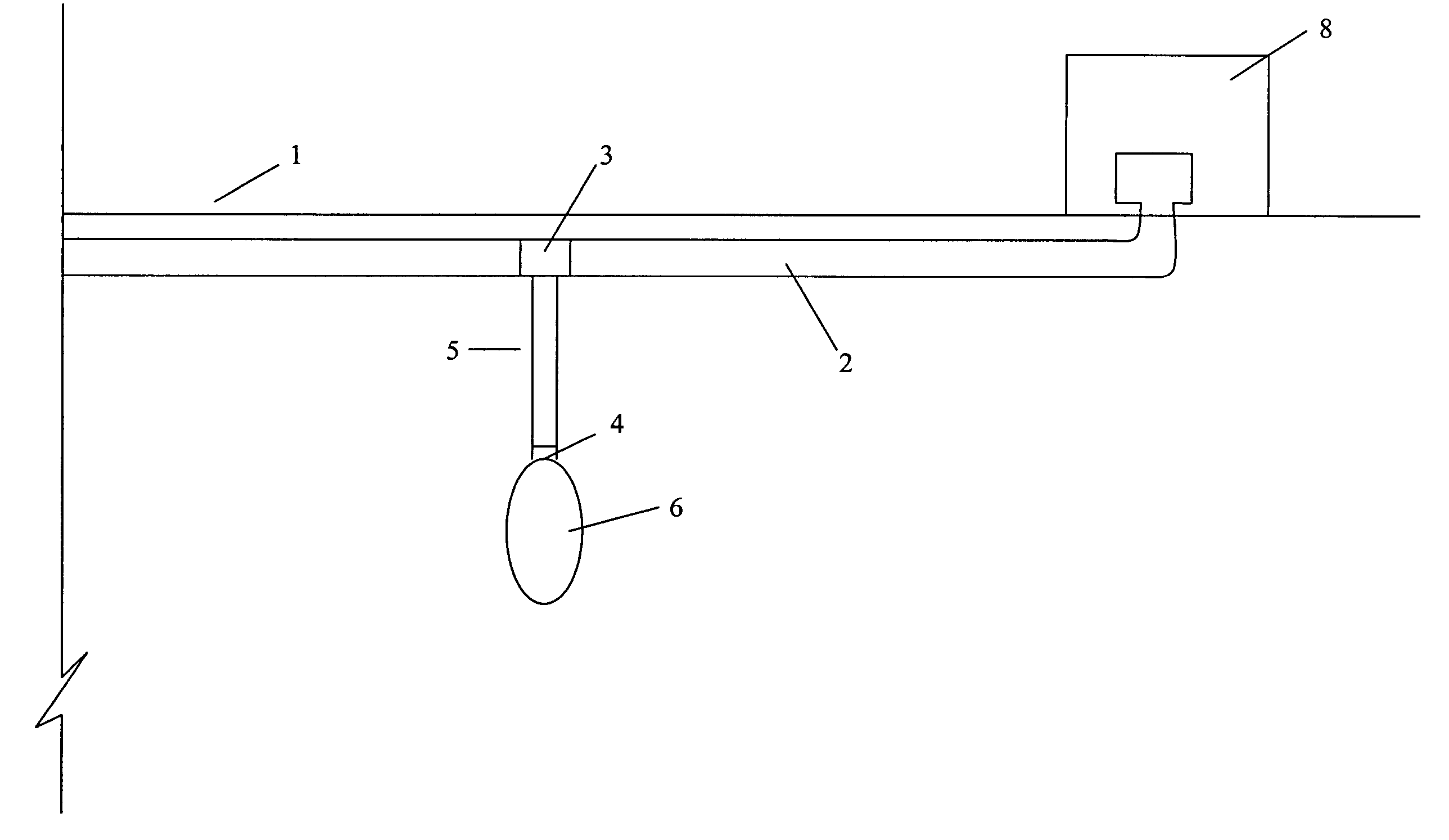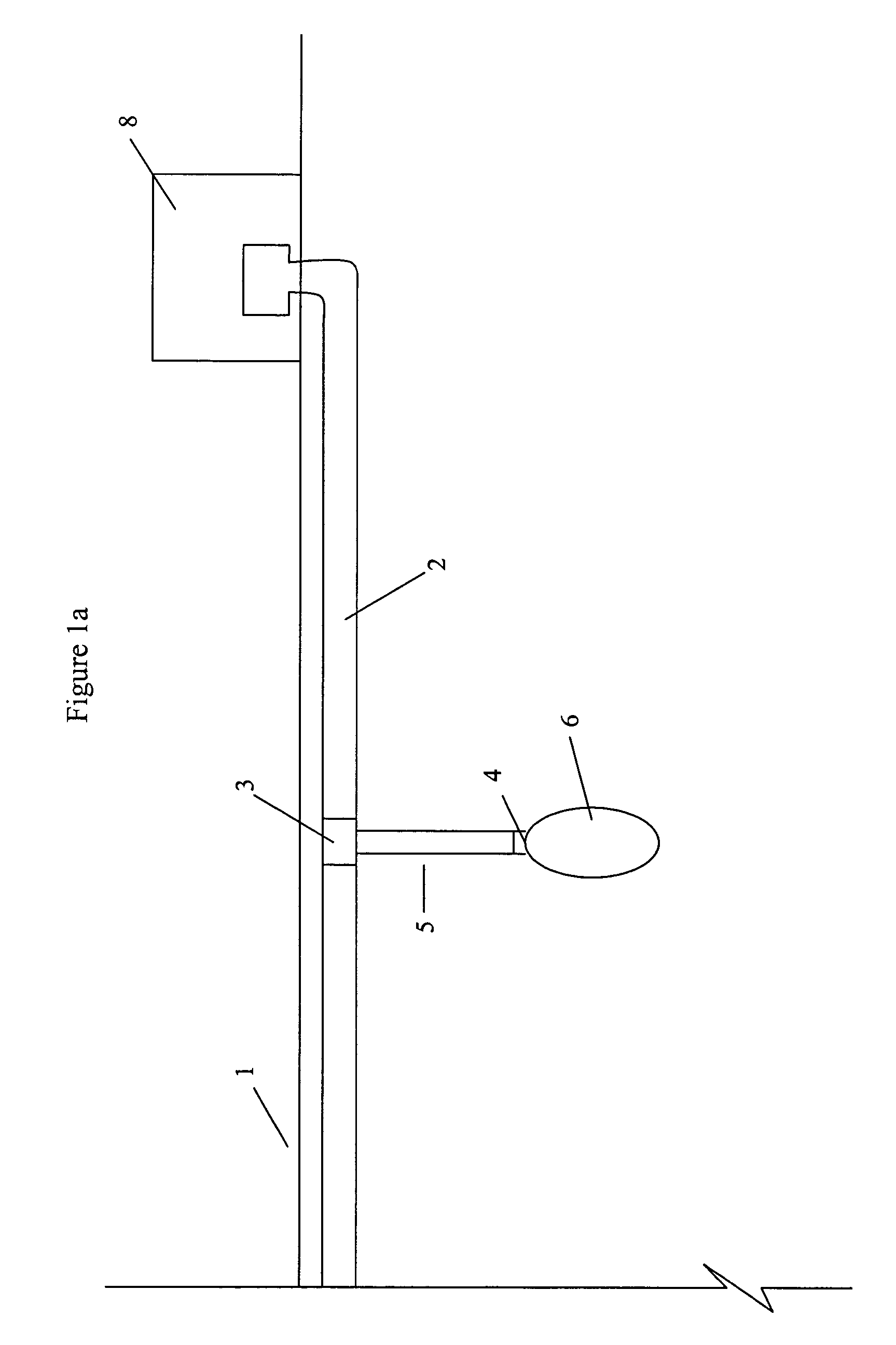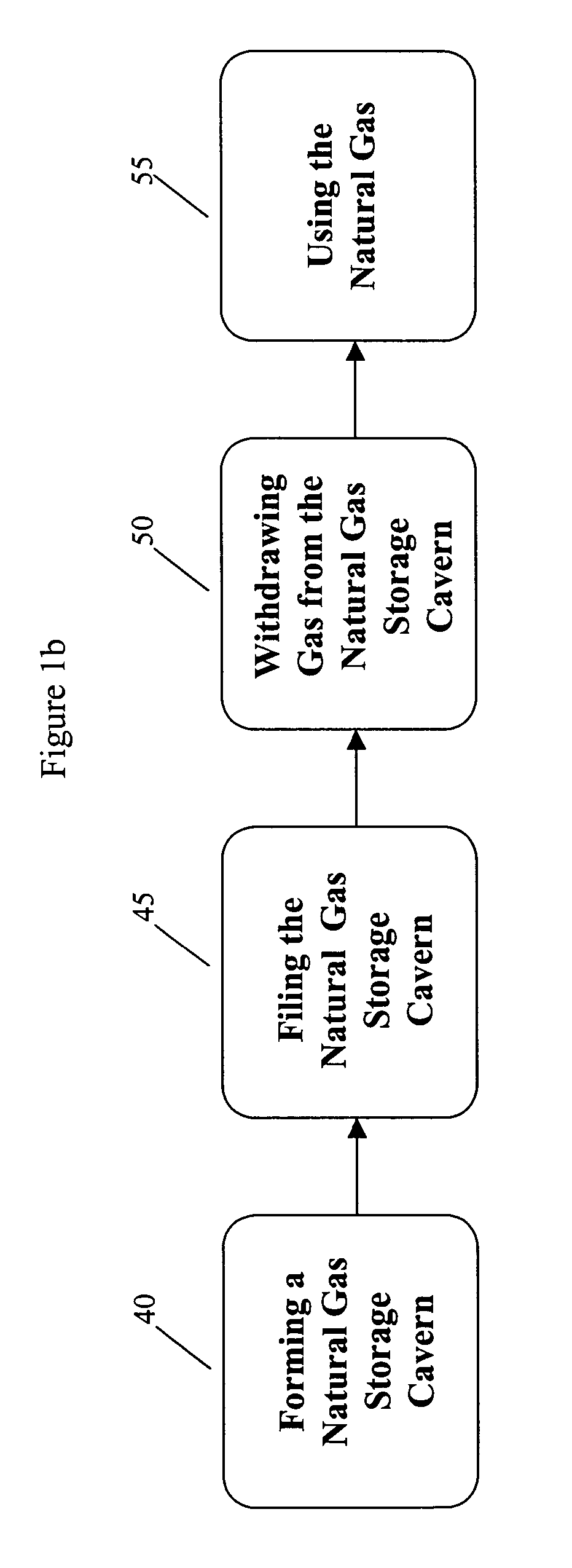However, unlike other commodities,
natural gas cannot be stored by the customer or by the producer in a warehouse until it is utilized.
In any event, a disruption will mean that one party or another may lose money if either a producer's supply is interrupted and / or a user's demand is interrupted.
Many reasons for short term disruptions exist and may include
plant maintenance or breakdowns, gas well problems, pipeline problems in one section of the pipeline, and the like.
On the other hand, if the supply is not equal to the in the short term demand, then short term price fluctuations, and losses to one party or another, can be quite high.
Moreover, if a trader takes a short term position he will typically not know what disruptions, either in the supply or demand, may occur in the future.
Prior art gas storage facilities do not provide the required capability for either accepting or producing large quantities of gas in the time frames required for short term trading.
For instance, the turn around costs of storing gas and retrieving gas are typically quite high in prior art gas storage facilities.
For instance, turn around costs of inserting gas into and out of prior art
underground storage requires large expenditures of energy / money for compressing, heating, cooling, and the like effectively making many short term turnarounds financially unfeasible.
Some types of reservoirs are structurally damaged if alternately increasing / decreasing
pressure cycle changes occur too frequently.
There is also the problem of changing the equipment configuration including valves, compressors, and the like, to permit changing the direction of flow of the gas supplies.
As well, there is the significant problem of pressure surges and drops, pressure
waves, and the like produced in the pipeline
system as a result of changing flow direction that may cause damage throughout the system.
The
minimum time for changing the direction of flow of gas for prior art utilities is at least one to two days, although as discussed above, frequent changes in gas flow directions for prior art gas storage facilities is economically unfeasible due to high turnaround costs and / or unfeasible due to potential damage to the facilities, including damage to the
underground storage reservoir itself.
In any event, a turn around time of one to two days for changing the direction of flow of gas into or out of the storage is too slow for use in short term trading, even assuming the other problems discussed above could be overcome.
However, the time required to withdraw gas and the time required to re-fill these storage facilities is a source of great time, expense and danger to suppliers, consumers and the like.
However, the
underground storage of today is drastically limited in its operational uses and abilities.
However, choices of storage field location and performance are limited by the inventory of depleted fields in any region.
However, prior art high-deliverability sites are drawn down in 20 days and refilled in 40 days, a relatively large period of time.
However, the time needed for re-fill is nearly twice that of drawing the natural gas.
If the reservoir is not close to existing pipelines or market areas and distribution lines, then greater expense will be incurred to establish connecting pipelines and less utility maybe derived.
Thus, gas cannot easily escape the large hollowed-out shape that forms a salt storage cavern.
However, at extreme depths, as
temperature and pressure increases, salt behaves as a plastic and will
creep or flow, which can become a major consideration in cavern construction possibly leading to cavern closure.
Thus, salt storage is generally limited to depths shallower than 6,000 feet.
These materials remain in the reservoir after the leaching process and affect the flow velocity and capacity of the reservoir itself.
In addition, because the height / width aspect is thin, the flatter reservoir ceiling is subject to greater stress and potential wall deterioration.
As a result of these as well as other factors, salt
bed storage development and operation can be more expensive than that of salt dome storage.
However, prior art methods of utilizing salt formations have required using compressors to compress natural gas to
high pressure within the storage facility.
As a result, often expensive and
time consuming compression, heating / cooling and energy costs have been required to use the storage facilities.
However, present methods of use for salt formations are limited to generally about one turnover per season.
However, the need for
natural gas storage and violent supply swings arises because the demand for natural gas during the winter months exceeds the nation's production capacity, particularly in the Upper Midwest and Northeast.
Additionally, when the pipelines are loaded to their maximum capacity a
bottleneck is formed in these pipelines as it is impossible to get additional gas into the pipelines until some of the gas has been consumed along the way.
A major problem encountered with natural gas pipelines is when demand exceeds the supply of the pipeline.
The suppliers of natural gas can attempt to produce more gas to fill the pipeline, but this requires more time and effort.
The prior art has tried to solve this problem with supplies from the depleted fields, aquifers and salt formations into the pipeline, but often it is not enough and there are severe shortages and price swings of natural gas.
These compressors require tremendous amounts of energy, thereby raising the costs of storage.
Likewise, when releasing the
high pressure gas from the
high pressure natural gas storage facilities, the gas must be decompressed as the flow enters the pipeline, thereby, again, raising the cost of the natural gas storage and retrieval operations.
A decrease in flow both into and out of the natural
gas pipeline makes it extremely difficult to make quick changes in the flow of natural gas in a
gas pipeline.
This patent does not disclose a relatively shallow depth storage cavern that may be used at a storage cavern operating pressure that is nominally the pressure of a pipeline.
 Login to View More
Login to View More  Login to View More
Login to View More 


